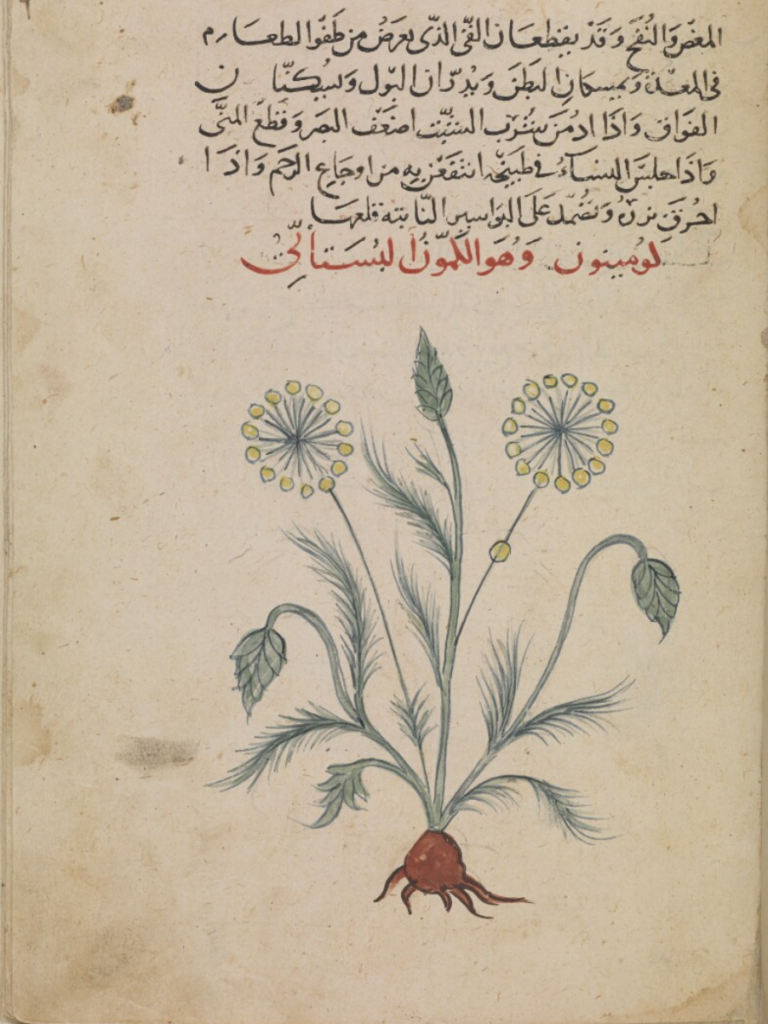The plant (Cuminum cyminum) is native to Central Asia and is attested as early as the second millennium BCE in Mesopotamia, where it was already used in cooking. Cumin is also found in a number of (fish) recipes in Apicius’ Roman cookery book.
Arab scholars mentioned several varieties of cumin (for example, Persian, Syrian, Kirmani, Nabataean), whereas the term was also used as a generic to denote other plants: kammūn rūmī/armanī (‘Byzantine/Armenian cumin’, i.e. caraway), kammūn ḥulw (‘sweet cumin’, i.e. aniseed). The variety known as black cumin is referred to in Arabic as ḥabba sawdā’.
In cooking, it was a highly popular aromatic, across all treatises, with the seeds being used whole or ground. The author of a 13th-century anonymous Andalusian treatise recommends cumin for vinegar dishes, in broth of fried poultry and meat, while its deflatuent and digestive effect makes it suitable for all dishes that contain vinegar or murrī.
Medicinally, it was considered hot and dry, and the seeds of the plant (whether wild or cultivated) were used as a digestive, emmenagogue, aphrodisiac and a cure for urinary, intestinal as well as eye diseases.


